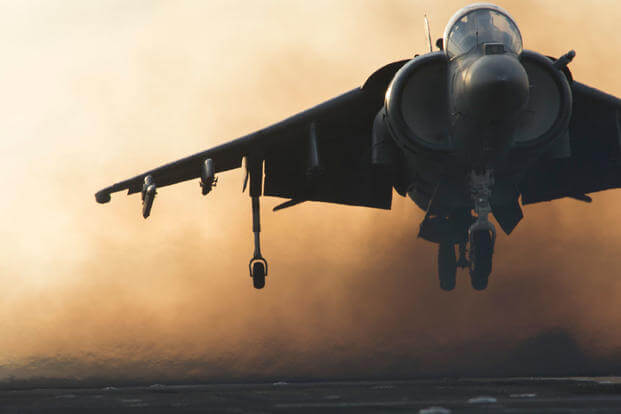The Navy's Mobile Diving and Salvage Unit 2 has taken over recovery operations for a Marine Corps AV-8B Harrier that crashed off the coast of Wilmington, North Carolina, nearly two weeks ago.
A team of 20 workers will try to salvage the aircraft, said 1st Lt. Maida Zheng, a spokesman for 2nd Marine Aircraft Wing.
The Harrier, with Marine Attack Squadron 54, Marine Aircraft Group 14, out of Cherry Point, North Carolina, went down just after 5 p.m. on May 6. While officials have not formally identified the cause of the crash, a Naval Safety Center report says the Harrier "lost thrust" prior to going down.
The pilot, who has not been identified, was able to eject from the aircraft and inflate a personal inflation device he was wearing in flight. He also inflated a life raft which held him until he was picked up in a rescue by an H-60 Seahawk, Zheng said.
The pilot was transported to Naval Hospital Camp Lejeune, North Carolina in stable condition and released May 7.
Zheng said divers have so far conducted a preliminary survey of the crash site and found no fuel or fluid leaks. The Harrier wasn't carrying any weapons when it went down, Zheng said.
The squadron has requested that the entire aircraft, which cost roughly $24 million new, be recovered. It's not clear how long salvage efforts will take.
Now three different investigations into the crash are ongoing, Zheng said: an aircraft mishap board investigation, a JAGMAN command investigation, and a Field Flight Performance Board investigation.
The crash did not prompt a safety stand-down at the squadron, however.
"The Harrier Fleet has not been grounded, there currently is no evidence from this mishap to indicate there is a systemic problem with the fleet's AV-8B aircraft," Zheng told Military.com. "If, during the mishap investigation, such a problem were to be discovered, the Marine Corps would take appropriate steps to address the issue with any fleet aircraft considered at risk."
The Harrier pilot had departed Wilmington International Airport to conduct flight training the night of the crash and had intended to return to the airport, officials said.
He was rescued by Navy responders with Naval Station Norfolk, Virginia, who were operating from the amphibious assault ship USS Wasp in support of Camp Lejeune's 22nd Marine Expeditionary Unit.
The Harrier has been used by the Marine Corps since 1985, and is set to be replaced in the coming decade by the F-35B Joint Strike Fighter.
-- Hope Hodge Seck can be reached at hope.seck@military.com. Follow her on Twitter at @HopeSeck.






























